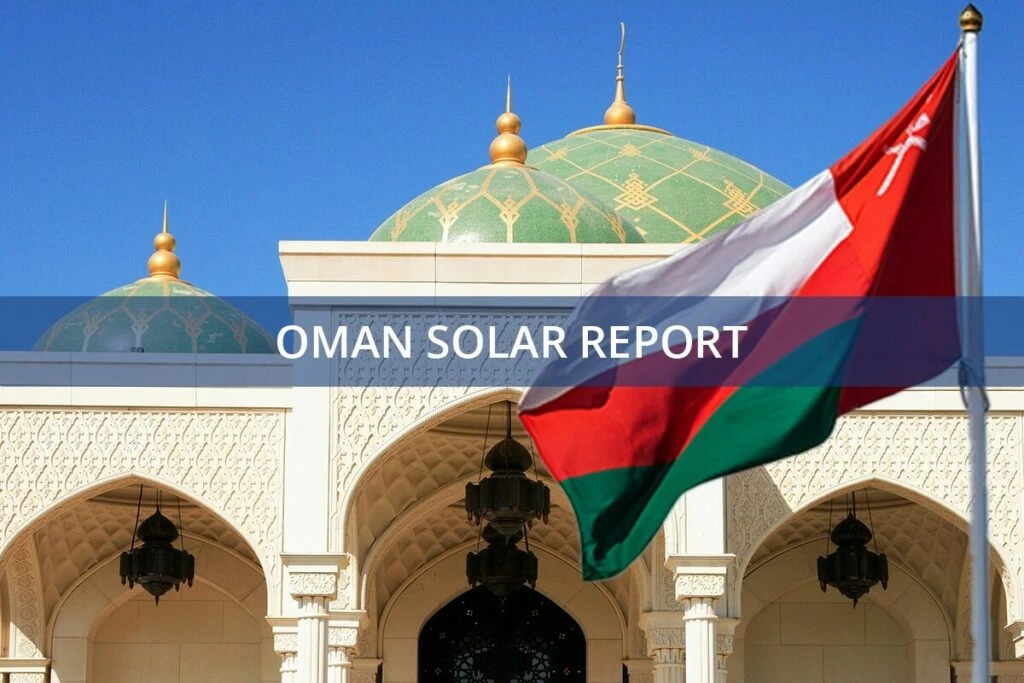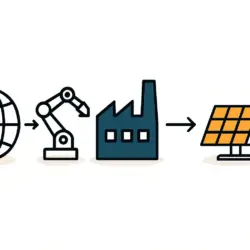Oman has inaugurated its second solar power plant, the Ibri III, marking a significant advancement in the nation’s renewable energy ambitions. With a capacity of 1,000 MW, this state-of-the-art facility is set to power nearly 100,000 homes annually and aligns with Oman’s Vision 2040 objectives to diversify energy sources and reduce carbon emissions.
Strategic Significance of Ibri Solar Power Plant
The Ibri III solar power plant represents a major milestone in Oman’s journey towards a more sustainable energy future. Located 300 km west of Muscat in Al Dhahirah Governorate, the plant is not only a technological achievement but also a strategic asset in the country’s energy mix. The plant is expected to significantly reduce Oman’s carbon footprint by cutting CO2 emissions by 1.6 million tonnes annually. As noted by PVKnowhow.com, the Ibri 3 project, along with other initiatives, is set to attract foreign investment and foster key international partnerships.
The project was developed through a consortium led by Saudi-based ACWA Power and Korea’s GS Inima, with an investment of approximately $900 million. This collaboration between international and local stakeholders underscores the importance of global partnerships in advancing renewable energy projects.
Technological Innovation at Ibri Solar Power Plant
The Ibri III plant boasts cutting-edge photovoltaic technology, featuring over 1.8 million bifacial solar panels. These panels are equipped with a single-axis tracking system, allowing them to follow the sun’s path and maximize energy generation. The use of bifacial panels, which capture sunlight from both sides, enhances the plant’s efficiency and energy output.
The plant is fully integrated into Oman’s national electricity grid, managed by the Oman Electricity Transmission Company (OETC). This integration is crucial for ensuring a stable and reliable supply of clean energy to meet the growing electricity demand in the country.
Economic and Environmental Impact of Ibri Solar Power Plant
The Ibri III solar power plant is expected to have a profound impact on Oman’s economy and environment. By reducing reliance on fossil fuels, the plant will help lower the country’s overall energy costs and contribute to a more sustainable economic model. The reduction of 1.6 million tonnes of CO2 emissions annually is a significant step towards achieving Oman’s climate goals and improving air quality for future generations.
In addition to its environmental benefits, the project has also created numerous job opportunities during its construction and operational phases. The involvement of local contractors and suppliers has further stimulated economic activity in the region, supporting Oman’s broader economic diversification efforts.
Future Prospects for Ibri Solar Power Plant
The successful commissioning of the Ibri III solar power plant sets the stage for future renewable energy projects in Oman. The country is already planning additional solar and wind projects to further diversify its energy portfolio and increase the share of renewables in its energy mix. These efforts are in line with Oman’s Vision 2040, which aims to achieve a more sustainable and resilient economy. As PVKnowhow.com reports, Oman has announced the launch of the 500 MW Ibri 3 solar power project in Al Dhahirah Governorate, marking a significant step in diversifying its energy sources.
The Ibri III project also serves as a model for future public-private partnerships in the renewable energy sector. The collaboration between ACWA Power, GS Inima, and Omani stakeholders demonstrates the potential for international cooperation in advancing large-scale infrastructure projects.
The Ibri III solar power plant is a monumental step forward for Oman’s renewable energy sector. It not only contributes to the country’s energy security but also aligns with global efforts to combat climate change. As Oman continues to invest in renewable energy, the Ibri III project will stand as a testament to the nation’s commitment to a cleaner and more sustainable future.



